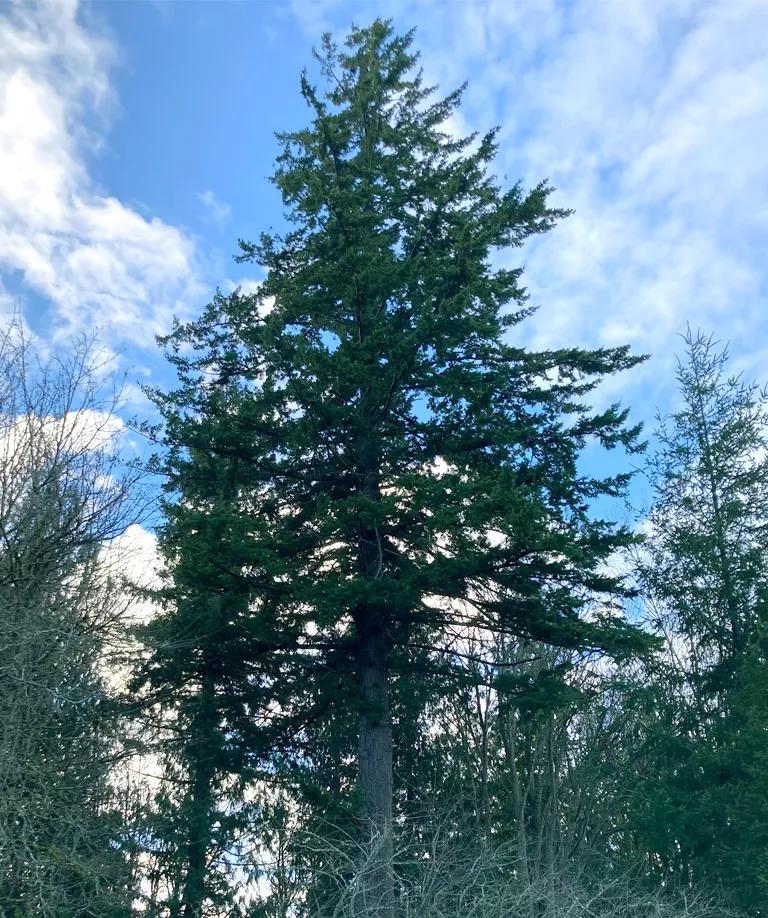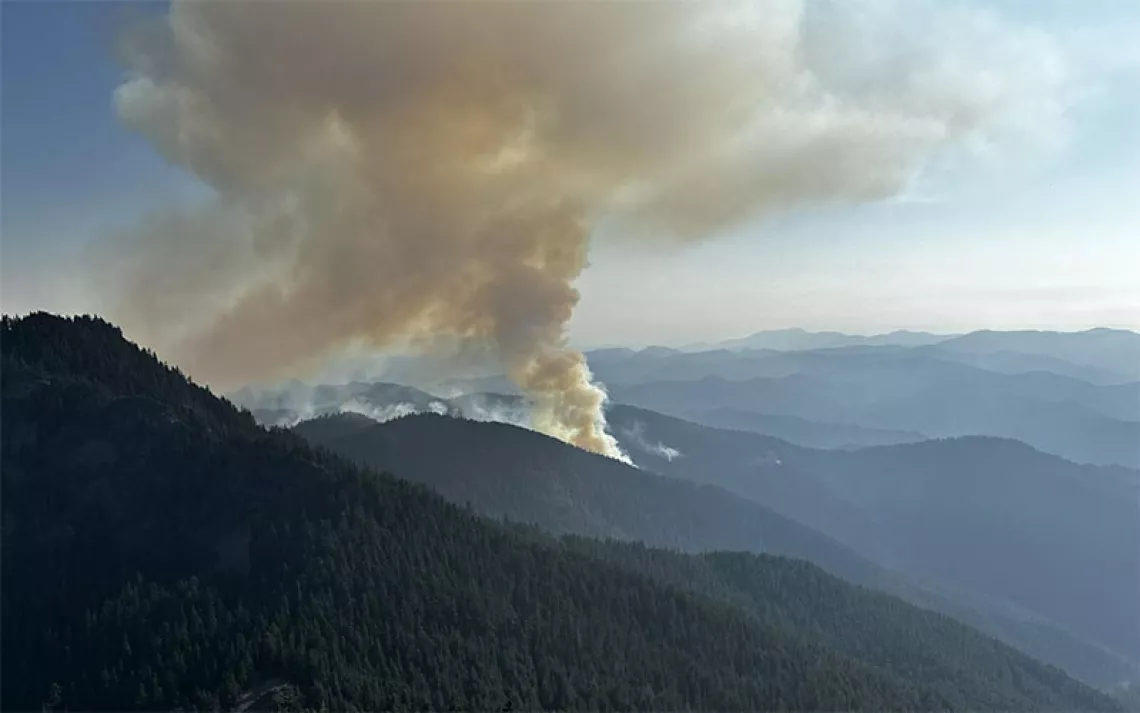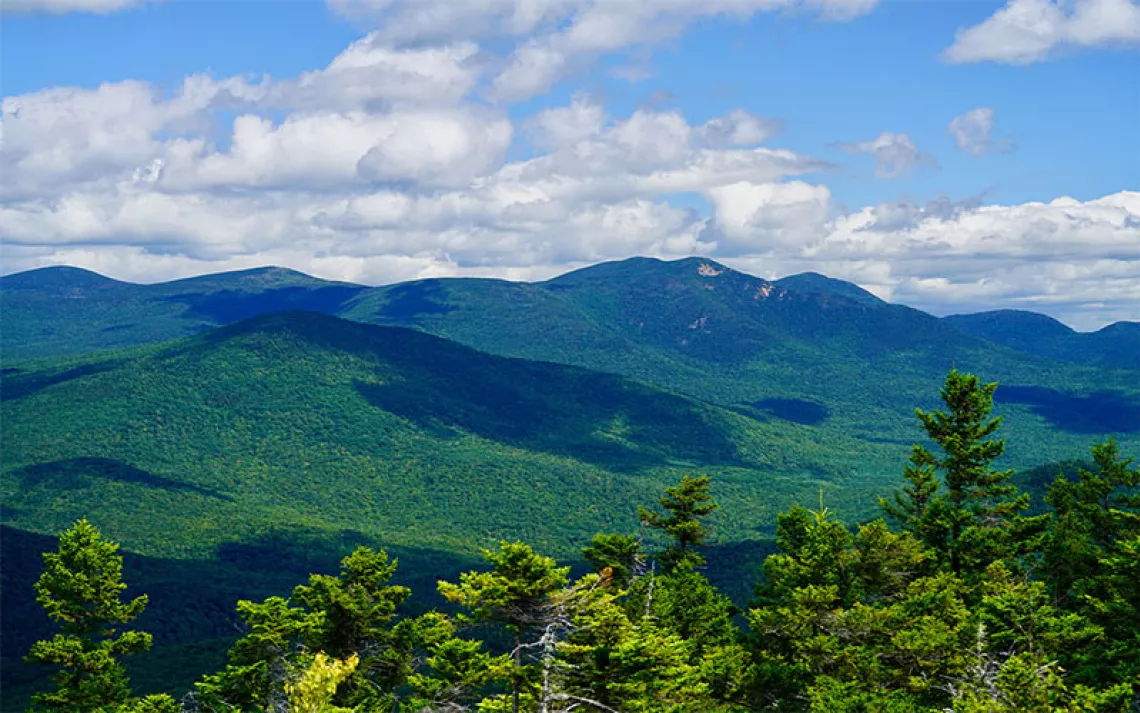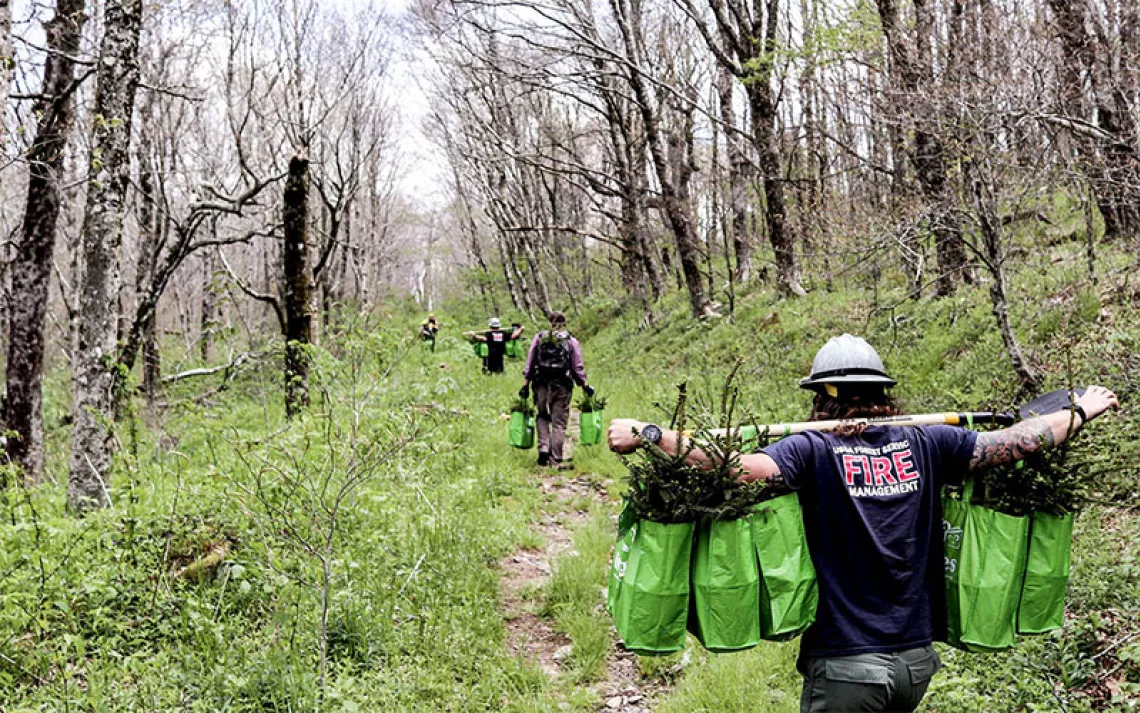The Giant Douglas Fir Tree in My Backyard Is a Time Machine
This portal to the fourth dimension shows how the past can inspire the future

Photo courtesy of Jason Mark
I have a time machine in my backyard. It isn’t a whiz-bang contraption out of an H.G. Wells fantasy, or a souped-up, plutonium-powered DeLorean. It’s a tree.
Mostly it’s an ordinary tree, just another Douglas fir like all the other Douglas firs that pack the woods here in the upper-left corner of the Pacific Northwest. What makes it special is its size—and its age. That fir tree is 101 feet tall (according to a snazzy app called Arboreal Tree) and a beast at its base, which measures roughly 17 feet in circumference. By my calculations, that makes my neighbor about 325 years old. I live in the shadow of an ancient.
My family is fortunate to have a home on the edge of town—what you might call the suburban-pastoral interface. Like many places here in Cascadia, this area was heavily logged in the late 19th and early 20th centuries, and the understory of the second-growth woods behind our place is scattered with stumps, some of them monsters to match the giant next to our house. How this one tree escaped the axe, I have no idea. But I’m obviously glad that it did. That big fir provides the occasional perch for eagles and owls, and it provides me with a daily dose of wonder by allowing me to see through the folds of time.
Hug an old tree, place your hands on its bark, and you can—with the barest tug of imagination—be transported to other eras. To be in the presence of such age brings the past within reach; to touch a centuries-old trunk is to feel history beneath your fingertips. Three hundred and twenty-five years? My backyard giant was already more than 100 years old when British navigator George Vancouver made first contact with the Indigenous Lummi people who call this place home. It was a different world then: the streams and rivers flowing with coho and Chinook, the sea full of orcas, the forests still unbroken.
When people hear old growth, they often flash on my Pacific Northwest. But as Krista Langlois reveals in “The Future Is Old Growth,” in recent decades, foresters have discovered pockets of precolonial ecosystems in the Northeast. “Enthusiasts and scientists have identified tens of thousands of acres of old growth . . . in Massachusetts and Maine, New Hampshire and Vermont, New York and Pennsylvania,” Langlois writes.
These outposts from another age are more than ecological curiosities; they may prove essential to restoring and rewilding the forests of the Northeast in the decades to come. “By protecting a layer around the remaining patches of northeastern old growth,” Langlois writes, “the old growth can help nurse the surrounding secondary forest back to health.” Especially if linked together, intact, mature forests can eventually provide refugia to flora and fauna as climate change intensifies.
Any good portal to the fourth dimension works in both directions: It can take you back or cast you forward, offering an opening to all sorts of alternate futures. I can picture my big fir still standing for human generations to come, surviving the floods and fires that are likely to be the hallmark of this century. Like the legacy forests of the Northeast, my Douglas fir could be the anchor of a deep-green regeneration—an old-growth future.
 The Magazine of The Sierra Club
The Magazine of The Sierra Club



